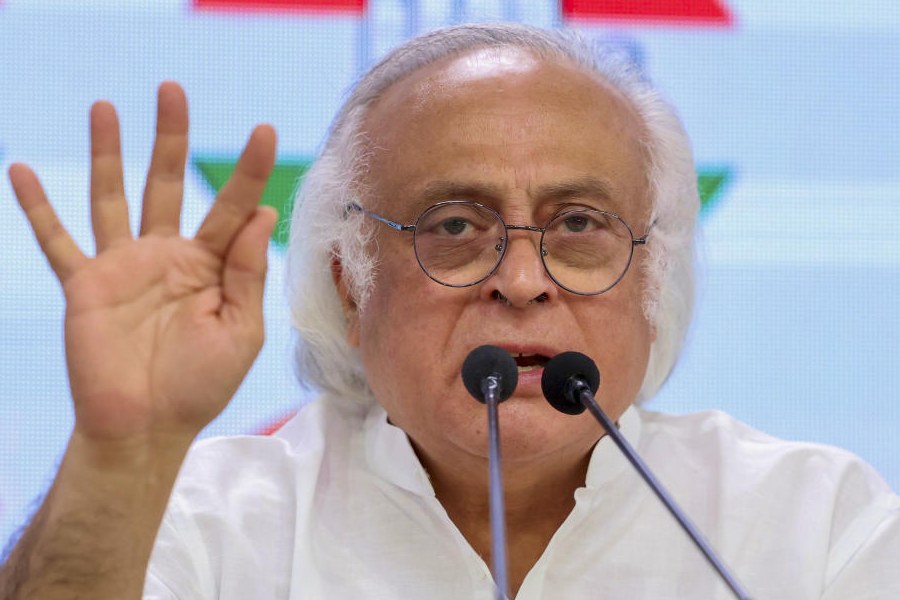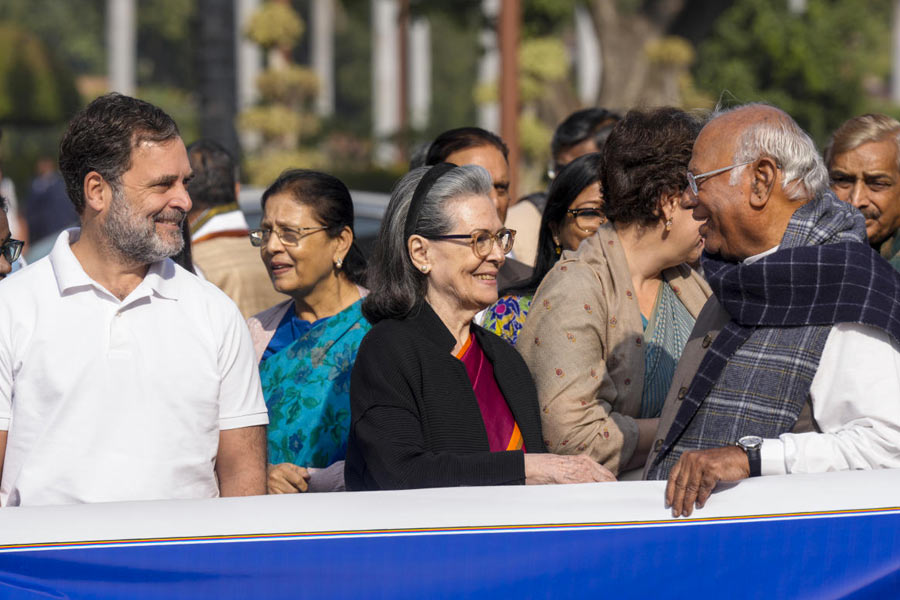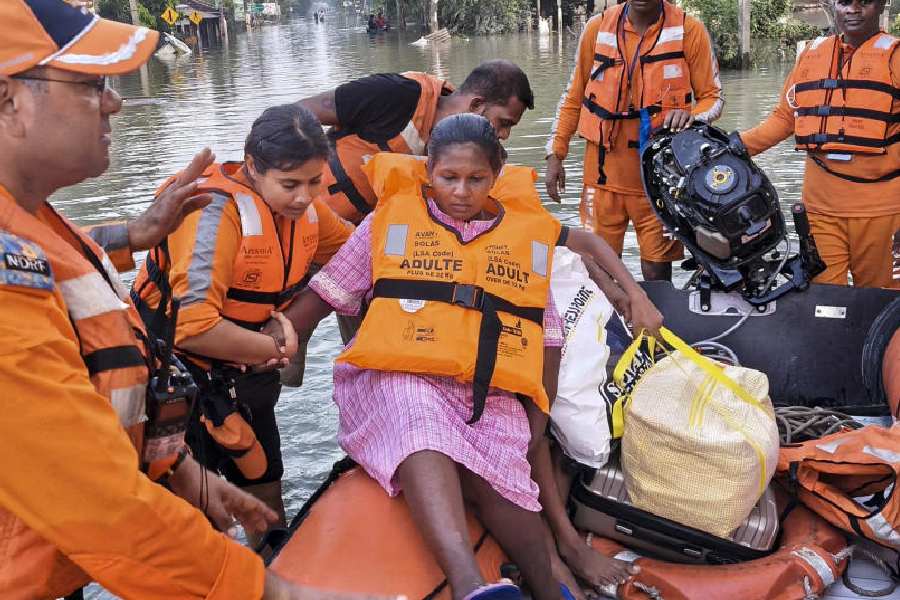 |
Sitting in his spacious office at the DC Court in Guwahati, the 34-year-old affable bureaucrat with his warm smile and impeccable Assamese makes his visitors feel at ease. Hailing from Ara in Bihar, the 1994 batch IAS officer is a postgraduate in history from Delhi University. His administrative raison-d?etre are the various projects being implemented under a scheme called Ammar (meaning ?our?), which have managed to strike the right emotional chord among rural masses of the district.
Samir Kumar Sinha had started his career as an assistant commissioner in Cachar district. Since then he has served as SDO (Sadar) Kokrajhar, SDO (civil), Bijni, staff officer to chief secretary, Assam and deputy commissioner, Tinsukia, before taking over as deputy commissioner, Kamrup. Sinha spoke to Teresa Rehman about his vision and plans for the development of the district.
Excerpts from the interview:
Q. How difficult is it to administer a huge district like Kamrup?
A. Kamrup is a huge district. The district administration has a team of reasonably competent officers and staff starting right from the grassroots level. Hence, we have not only been successful in rendering the basic public services, but also been able to initiate several innovative projects.
However, we do face difficulties at times. Like during the elections or the unprecedented floods this year. But the problems were only in regard to availability of resources and infrastructure.
Q. What inspired the administration to prepare ?the vision document of the district??
A. The document includes the visionary plans of chief minister Tarun Gogoi. He asked me to design the document with emphasis on generating self-employment in Kamrup?s many backward pockets.
Q. How would you make a short analysis of the district?
A. The district has plenty of natural resources, good rainfall and fertile land. It is strategically located and relatively well connected via the national highways, rail links and inland water transport system. The weaknesses include infrastructural bottlenecks and non-availability of adequate backward and forward linkages in different sectors ultimately leading to low income patterns.
In terms of opportunities, based on local resources we can develop small-scale industries such as agro-based industries, textiles ? particularly exotic muga and eri silk ? bamboo and wooden handicrafts. Kamrup has the potential to become a major tourist destination The main threats are the devastating annual floods and lack of awareness among the people.
Q. What steps have been taken to preserve Sualkuchi as a heritage village?
A. Sualkuchi has been selected for the Government of India-UNDP endogenous tourism project. The project will create a community-owned, culturally expressive and environmentally sustainable rural tourism model at Sualkuchi.
Sualkuchi?s silk-weaving community is already being organised into self-help groups and being trained by the National Institute of Fashion Technology (NIFT) in modern designs under an NEC-funded project.
Q. Tell us about the advances in the Green Gold project on bamboo products.
A. The Mirza-Palashabari area has a huge untapped potential for self-employment through self-help groups producing bamboo products ranging from furniture, laminated boards for false ceiling, incense sticks, mats etc. The project Green Gold, is going to provide training in advanced processing and manufacturing technology.
Q. There is an aromatic plant revolution going on in the villages of Assam. How would you assess the developments in this sector?
A .A special project on citronella cultivation in Boko and the adjoining areas is being started by the district administration.
Q. Since the economy of Kamrup district is predominantly dependent on agriculture and allied activities, what steps has the district administration taken to harness the agricultural potential of the region?
A. We are trying to ensure farmers? easy access to improved mechanisation support, improved seeds, credit cards, cold storage, agricultural godowns as well as marketing facilities. A cold storage is under construction at Singimari in Sualkuchi development block.
We are also experimenting with new crops like floriculture, aromatic plants, vanilla, lemon grass, aloe vera suited to the local conditions. The area bordering Meghalaya is most suitable for horticultural products, including pineapple, jackfruit, oranges. We are also focusing on areas having special requirements like the chars, watershed areas etc.
The district administration is also in the process of constituting an ?agricultural technology management agency? for disseminating technology to the grassroots.
Q. How far successful has been the Aamar Manuh project?
A. Aamar Manuh is about all-round development of the rural poor by creating economic self-reliance and group dynamism through programmes like SGSY and formation of SHGs. The administration has been focussing on areas like skill upgradation. The concept of ?lab-to-land? is being put into practice with emphasis on model farms, innovative crop cultivation and latest technology.
Q. Elementary education still remains a far cry for the rural children. What have you done in this regard?
A. The district administration has launched the Aamar Shiksa programme with the objective of achieving cent per cent literacy in the district. We have already started constructing/extending/repairing school buildings and developing the existing infrastructure in schools. Under the Swajaldhara scheme, all schools will be provided with drinking water facilities. In addition, the district administration had successfully implemented a pilot project for providing cooked midday meal to 5,716 children of 49 lower primary schools of the Sualkuchi block for two months. We plan to further build on this and make it a running programme for the whole district in the near future. We have also set up Amar Parhasali in every school-less locality.
Q. Has the administration come up with any scheme to empower the women leaders at panchayats?
A. In the near future, we plan to take up a programme on training and capacity-building of women leaders to create awareness about their rights and responsibilities as people?s representatives.











